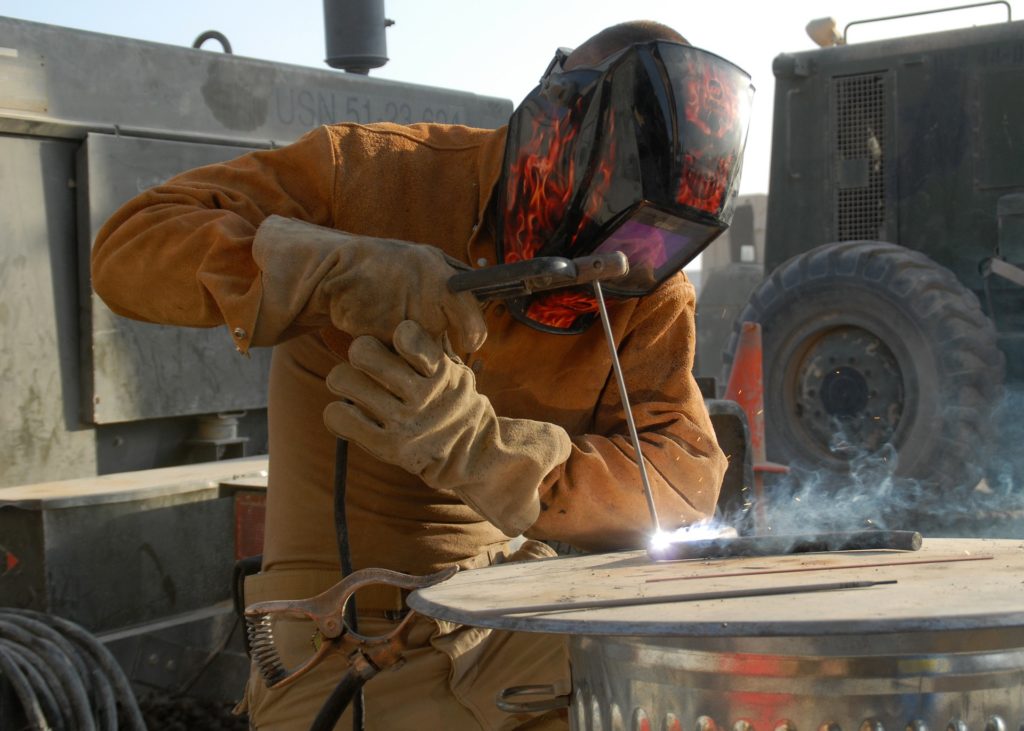 Construction is one of the most dangerous jobs in the country. According to OSHA (Occupational Safety and Health Administration) nearly 6.5 million people work at approximately 252,000 construction sites across the nation on any given day. Fatalities in the construction industry are higher than the national average for all industries.
Construction is one of the most dangerous jobs in the country. According to OSHA (Occupational Safety and Health Administration) nearly 6.5 million people work at approximately 252,000 construction sites across the nation on any given day. Fatalities in the construction industry are higher than the national average for all industries.
Deadly construction accidents can be avoided. The use of personal protective equipment (PPE) and safety training saves lives. It is up to employers to provide job-appropriate safety gear to their workers and offer necessary instruction and safety training.
Protect Yourself in 8 Critical Ways:
- Head Protection
The type of hard hat that must be worn depends on the type of work a laborer does and the nature of the worksite. For most general construction jobs on an average worksite, a basic hard hat that offers protection from falling objects is sufficient.
In some cases, specialized protection is needed. This may include head protection that can absorb and protect the wearer from electrical shocks. These hats should be routinely inspected to ensure they are in good condition and be replaced immediately whenever they absorb a heavy blow, even if there is no visible damage.
- Eye and Face Protection
Eye protection for construction workers is vital. It can include goggles or safety glasses so that dust and debris do not enter the worker’s eyes. Welders need to wear stronger eye protection—a face shield—that shades the eyes from the brightness, sparks, and heat of the welding activity. As different materials give off varying levels of heat, it is important to know those materials and ensure the right level of protection for that type of metal.
Face protection includes masks and ventilators to keep dust and particulates from entering throat and lungs. While simple masks may suffice for routine dust, industry-approved ventilators need to be worn when dealing with things like mercury and asbestos. The long-term medical effects of not wearing a ventilator around airborne chemicals can be catastrophic.
- Hearing Protection
If close to or operating loud machinery and/or vehicles a worker must wear proper ear protection. Most construction workers who do not wear such protection experience long-term damage to their ears, causing permanent hearing loss. Wearing the correct ear protection can prevent this and make a real difference in the quality of a worker’s life.
- Arm and Hand Protection
This can be achieved by wearing long-sleeved shirts while at a worksite. Gloves are not always necessary, but should be worn when handling cement, dealing with electrical wires, performing welding, and other dangerous tasks. Workers need to wear the correct thickness and glove material. They may need to be trained and informed on the necessary protective equipment for the job.
- Foot Protection
Proper footwear is essential because construction workers are generally on their feet for many hours. At minimum, workers should have steel-toed boots that are slip-resistant, helping prevent falls and ensuring their toes don’t get crushed if something is dropped on their feet. Additional protection may include metatarsal protection, preventing injuries higher up on the foot and puncture-resistant soles to keep workers’ feet safe even if they step on something sharp.
- Fall Protection
The most important but least-used types of protection are fall arrest systems and personal protective equipment (PPE). These include things like safety belts and lifelines worn while working on a roof or other elevated position. Every worker who is at risk of falling more than six feet should wear fall arrest gear at all times to prevent serious injuries. Open areas such roof edges and unfinished floors of an elevated structure should have nets and barriers to keep people from easily falling off.
What Are Your Employer’s Responsibilities?
Under federal law, employers are responsible for providing the majority of protective gear for their workers at a construction site. They must see that this gear is properly maintained and that all workers understand how to use it to remain safe while on the job. With a few exceptions, this protective gear includes:
- Appropriate hard hats
- Non-prescription eye protection
- Goggles, face shields, and respirators
- Hearing protection
- Firefighting protective gear
- Appropriate gloves for a given task and job
- Fall arrest systems and restraints
- Rubber boots with steel toes and metatarsal foot protection
Exceptions to these requirements include non-specialty footwear and eye protection that the worker is allowed to wear off the jobsite—such as a worker’s steel-toed shoes or boots. Everyday clothing like pants and long-sleeved shirts, protection from the weather such as sunscreen, and items that an employee has lost or taken home, must be provided or replaced by that employee.
Failure to provide equipment for employees can make an employer liable for injuries that occur while on the jobsite. If you suffered a job-related injury in New York City, call (212) 986-7353. The top NY construction accident lawyers at Wingate, Russotti, Shapiro, Moses & Halperin, LLP, help people just like you get their lives back together.
Your consultation is free, and you owe us nothing unless we get you fair compensation for your injuries and losses.